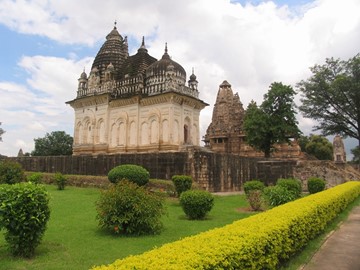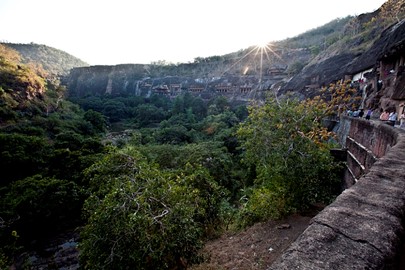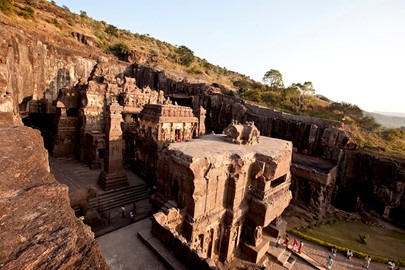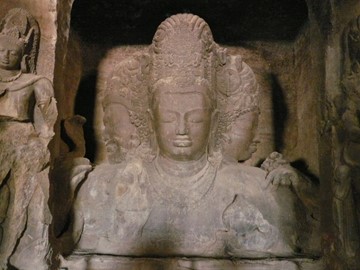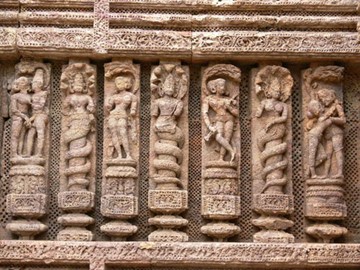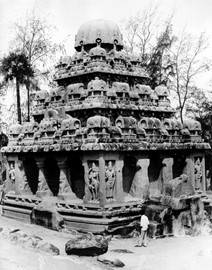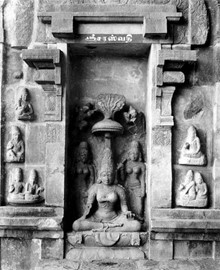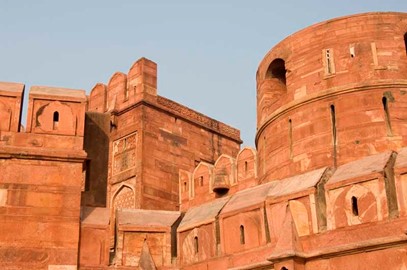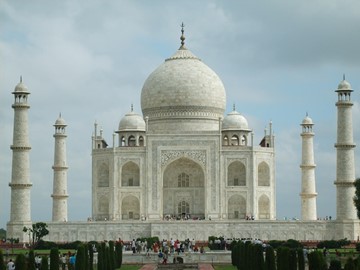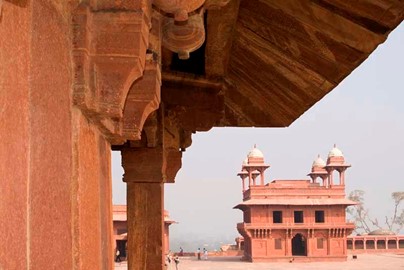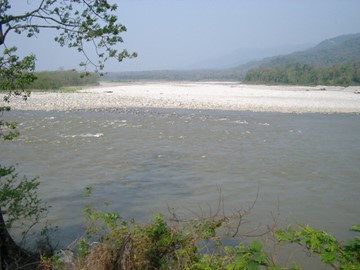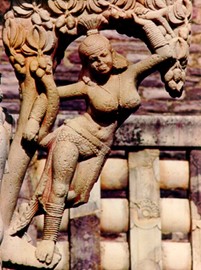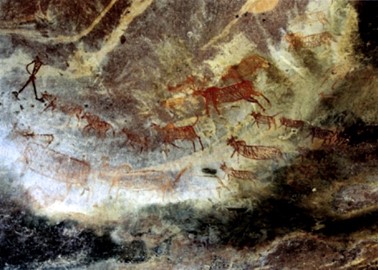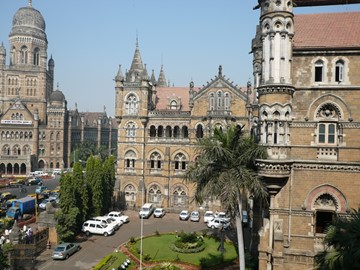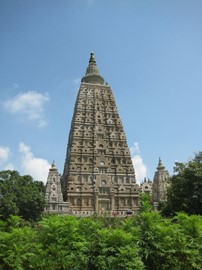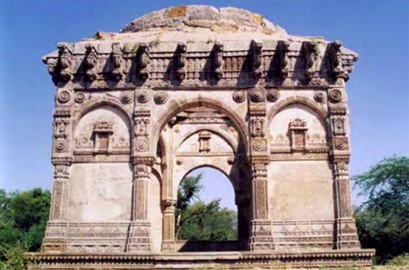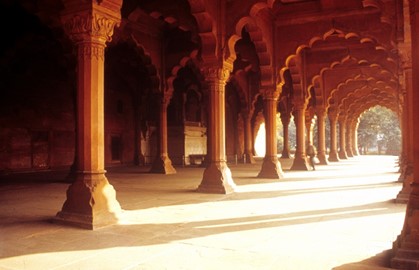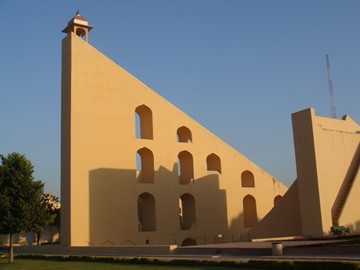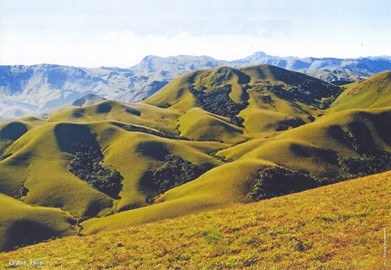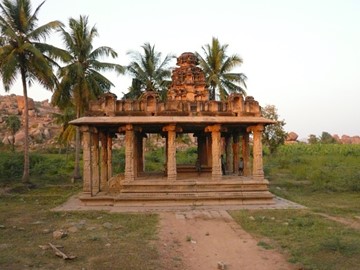region :: asia and the pacific
Khajuraho
Khajuraho, a UNESCO World Heritage site in India, is renowned for its stunning group of Hindu and Jain temples built between the 9th and 11th centuries by the Chandela dynasty. These temples are celebrated for their intricate carvings, including detailed erotic sculptures, which showcase exceptional architectural brilliance and artistic mastery. Originally consisting of over 85 temples, around 25 well-preserved structures remain today, attracting visitors worldwide for their historical and cultural signific... Read More
Ajanta Caves
The Ajanta Caves, a UNESCO World Heritage site in India, are a remarkable collection of ancient rock-cut Buddhist monuments dating from the 2nd century BCE to the 6th century CE. Renowned for their exquisite paintings and sculptures, these caves showcase a fusion of artistic and architectural brilliance, depicting Buddhist religious themes and narratives. Discovered in 1819, the site comprises 30 caves, including monastic halls and sanctuaries, offering a glimpse into India’s rich cultural and spiritual his... Read More
Ellora Caves
The Ellora Caves, a UNESCO World Heritage site in India, are a remarkable complex of rock-cut temples and monasteries dating from the 6th to 10th centuries CE. Carved into a basalt cliff, this site features 34 caves showcasing a blend of Buddhist, Hindu, and Jain artistry, with intricate sculptures, towering pillars, and detailed reliefs. Highlights include the grand Kailasa Temple, an architectural marvel dedicated to Lord Shiva, reflecting the skill and devotion of ancient artisans. Ellora stands as a tes... Read More
Elephanta Caves
The Elephanta Caves, a UNESCO World Heritage site in India, are a remarkable collection of rock-cut temples dating back to the 5th to 8th centuries. These ancient caves, primarily dedicated to Lord Shiva, showcase intricate carvings, sculptures, and architectural brilliance, reflecting the rich cultural and religious heritage of the period. The site is a testament to India's historical artistry and spiritual traditions, attracting visitors and scholars worldwide.
Sun Temple
The Sun Temple at Konârak, a UNESCO World Heritage site in India, is a 13th-century architectural marvel dedicated to the Hindu sun god, Surya. Built by King Narasimhadeva I of the Eastern Ganga dynasty, this temple is renowned for its intricate stone carvings and colossal chariot design, featuring 24 elaborately carved wheels and seven horses. It stands as a testament to ancient Indian craftsmanship and astronomical knowledge, drawing global admiration for its historical and cultural significance.
Mahabalipuram
Mahabalipuram and Konârak are UNESCO World Heritage sites in India, renowned for their ancient architectural marvels. Mahabalipuram features intricately carved rock-cut temples, monolithic shrines, and cave sanctuaries from the 7th and 8th centuries, reflecting Pallava dynasty artistry. Konârak is home to the 13th-century Sun Temple, an exquisite example of Kalinga architecture, designed as a massive chariot with detailed stone carvings. Both sites showcase India's rich historical and cultural legacy.
Chola Temples
The Chola Temples, recognized as a UNESCO World Heritage site, are a remarkable collection of ancient Hindu temples built during the Chola dynasty in India between the 9th and 11th centuries. Renowned for their architectural grandeur, intricate stone carvings, and towering gopurams (gateway towers), these temples exemplify the artistic and engineering prowess of the era. Constructed primarily as centers of worship dedicated to deities like Shiva, they also served as hubs for cultural and religious activitie... Read More
Agra Fort
Agra Fort, a UNESCO World Heritage site in India, is a majestic red sandstone fortress showcasing Mughal architectural brilliance. Built primarily by Emperor Akbar in the 16th century, it served as a royal residence and military stronghold, housing ornate palaces, mosques, and audience halls. Its robust walls and strategic design reflect a blend of defensive ingenuity and imperial grandeur, offering a glimpse into India's rich historical legacy.
Taj Mahal
The Taj Mahal, a UNESCO World Heritage site in India, is an iconic 17th-century mausoleum commissioned by Emperor Shah Jahan for his wife Mumtaz Mahal. Crafted from white marble, it showcases exquisite Mughal architecture with its symmetrical design, intricate carvings, and grand dome. The site also includes lush gardens, a mosque, and a guest house, reflecting its historical and cultural significance. It stands as a timeless symbol of love and a masterpiece of global heritage.
Fatehpur Sikri
Fatehpur Sikri, a UNESCO World Heritage site in India, is a historic city built by Emperor Akbar in the late 16th century as the Mughal capital. Constructed primarily from red sandstone, it showcases a blend of Persian, Indian, and Islamic architectural styles, featuring notable structures like the Buland Darwaza, Jama Masjid, and Panch Mahal. Abandoned within two decades due to water scarcity, it remains a well-preserved testament to Mughal grandeur and urban planning. Today, it attracts visitors for its c... Read More
Nanda Devi and Valley of Flowers
Nanda Devi and Valley of Flowers, a UNESCO World Heritage site in India, is renowned for its stunning natural beauty and biodiversity. This protected area features the majestic Nanda Devi peak, one of India's highest mountains, surrounded by pristine alpine meadows, glaciers, and rare flora like the blue poppy. The Valley of Flowers is celebrated for its vibrant wildflower blooms, especially during the monsoon season, alongside a rich ecosystem supporting endangered species such as the snow leopard and Hima... Read More
Kaziranga
Kaziranga National Park, a UNESCO World Heritage Site in India, is renowned for its rich biodiversity and conservation success. It serves as a critical habitat for the world’s largest population of the Indian one-horned rhinoceros, alongside tigers, elephants, and numerous bird species. The park’s unique ecosystem, featuring grasslands, wetlands, and forests, supports a thriving wildlife population and attracts global attention for its natural heritage.
Manas Wildlife Sanctuary
Manas Wildlife Sanctuary, a UNESCO World Heritage site in India, is a biodiversity hotspot renowned for its rich flora and fauna. This protected reserve is home to numerous endangered species, including the Bengal tiger, Indian elephant, and pygmy hog. The sanctuary also serves as a critical habitat for the rare golden langur and supports a diverse ecosystem of grasslands, forests, and riverine landscapes. Its significance lies in its role as a conservation area, promoting ecological balance and wildlife pr... Read More
Keoladeo
Keoladeo National Park, a UNESCO World Heritage site in India, is a renowned wetland sanctuary famous for its rich biodiversity and vibrant birdlife. Originally a royal hunting ground, it now hosts over 370 bird species, including migratory waterfowl like the Siberian crane, alongside diverse mammals and reptiles. Its unique mosaic of wetlands, woodlands, and grasslands supports a thriving ecosystem, making it a critical conservation site and a paradise for nature enthusiasts.
Sundarbans
Sundarbans National Park, a UNESCO World Heritage Site in India, is a unique biodiversity hotspot renowned for its vast mangrove forests and rich wildlife. It serves as a critical habitat for the endangered Bengal tiger, along with numerous species of birds, reptiles, and aquatic animals. The park’s intricate network of tidal waterways and islands supports a delicate ecosystem, making it a globally significant conservation area.
Sanchi
The Buddhist Monuments at Sanchi, a UNESCO World Heritage site in India, are a remarkable collection of ancient structures dating back to the 3rd century BCE. This historic complex includes intricately carved stupas, monasteries, and temples that showcase the evolution of Buddhist art and architecture. The site is renowned for its well-preserved Great Stupa, a significant pilgrimage destination that exemplifies early Buddhist monument design. These monuments collectively reflect the profound cultural and re... Read More
Rock Shelters of Bhimbetka
The Rock Shelters of Bhimbetka, a UNESCO World Heritage site in India, are a remarkable collection of prehistoric rock art and archaeological remains spanning over 100,000 years. Discovered in 1957, these natural shelters showcase paintings from the Paleolithic to medieval periods, depicting daily life, animals, and rituals of ancient inhabitants. The site offers invaluable insights into human evolution and cultural development, preserved within its rugged sandstone formations.
Chhatrapati Shivaji Terminus
Chhatrapati Shivaji Terminus, a UNESCO World Heritage site in India, is an iconic railway station renowned for its Victorian Gothic architecture blended with Indian influences. Designed by Frederick William Stevens and completed in 1888, it serves as a major transportation hub and a symbol of the country's colonial past. The structure features intricate stone carvings, pointed arches, and a grand central dome, making it a masterpiece of historical and architectural significance. Today, it stands as a testam... Read More
Mahabodhi Temple
The Mahabodhi Temple Complex, a UNESCO World Heritage site in India, is an ancient Buddhist temple renowned for its historical and spiritual significance. Built around the 3rd century BCE and later expanded, it marks the location where Gautama Buddha attained enlightenment under the Bodhi Tree. The complex features a striking 55-meter-high pyramid-shaped tower, intricate carvings, and serene courtyards, reflecting a blend of architectural styles from different periods. It remains a vital pilgrimage destinat... Read More
Champaner Pavagadh
Champaner-Pavagadh, a UNESCO World Heritage site in India, is a remarkable historical and archaeological complex showcasing a blend of Hindu and Islamic architecture. This well-preserved site features an ancient fortified city, mosques, temples, and stepwells, reflecting its rich cultural heritage from the 8th to 14th centuries. The hill of Pavagadh, crowned with a revered temple, adds spiritual significance to this unique destination, recognized for its outstanding universal value.
Red Fort
The Red Fort Complex, a UNESCO World Heritage site in India, is a historic fortress renowned for its stunning Mughal architecture and rich history. Constructed in the 17th century by Emperor Shah Jahan, it served as the main residence of Mughal emperors for nearly 200 years and later became a symbol of India's struggle for independence. The complex features impressive red sandstone walls, intricate palaces, and beautiful gardens, reflecting the grandeur and artistic mastery of the Mughal era. Today, it stan... Read More
Mountain Railways of India
The Mountain Railways of India, a UNESCO World Heritage site, showcase an impressive feat of engineering with their scenic routes through rugged terrain. Constructed between the late 19th and early 20th centuries, these railways highlight innovative solutions to challenging landscapes, blending historical significance with stunning natural beauty. They remain operational, offering a unique travel experience while preserving their cultural and technical legacy.
Jantar Mantar
Jantar Mantar, a UNESCO World Heritage site in India, is an extraordinary collection of 18th-century astronomical observatories built by Maharaja Jai Singh II. These architectural marvels, featuring large-scale instruments like sundials and celestial trackers, were designed to precisely measure time, predict eclipses, and observe planetary positions. The site showcases a brilliant fusion of science, architecture, and cultural heritage, reflecting India’s historical advancements in astronomy. Today, it stand... Read More
Western Ghats
The Western Ghats, a UNESCO World Heritage Site in India, is a biodiversity hotspot renowned for its rich flora and fauna. This mountain range, running parallel to the western coast, hosts numerous endemic species, including rare plants, animals, and birds, thriving in its diverse ecosystems like tropical rainforests and grasslands. It also plays a vital role in regulating the region's monsoon climate and supporting livelihoods through its rivers and forests. Recognized for its ecological significance, it s... Read More
Hampi
Hampi, a UNESCO World Heritage Site in India, is a captivating ancient city renowned for its historical and architectural significance. Once the thriving capital of the Vijayanagara Empire in the 14th century, it boasts an impressive array of intricately carved temples, royal pavilions, and monolithic sculptures spread across a vast landscape. The site, including the iconic Virupaksha Temple and Vittala Temple with its musical pillars, offers a glimpse into a rich past, blending natural beauty with cultural... Read More
